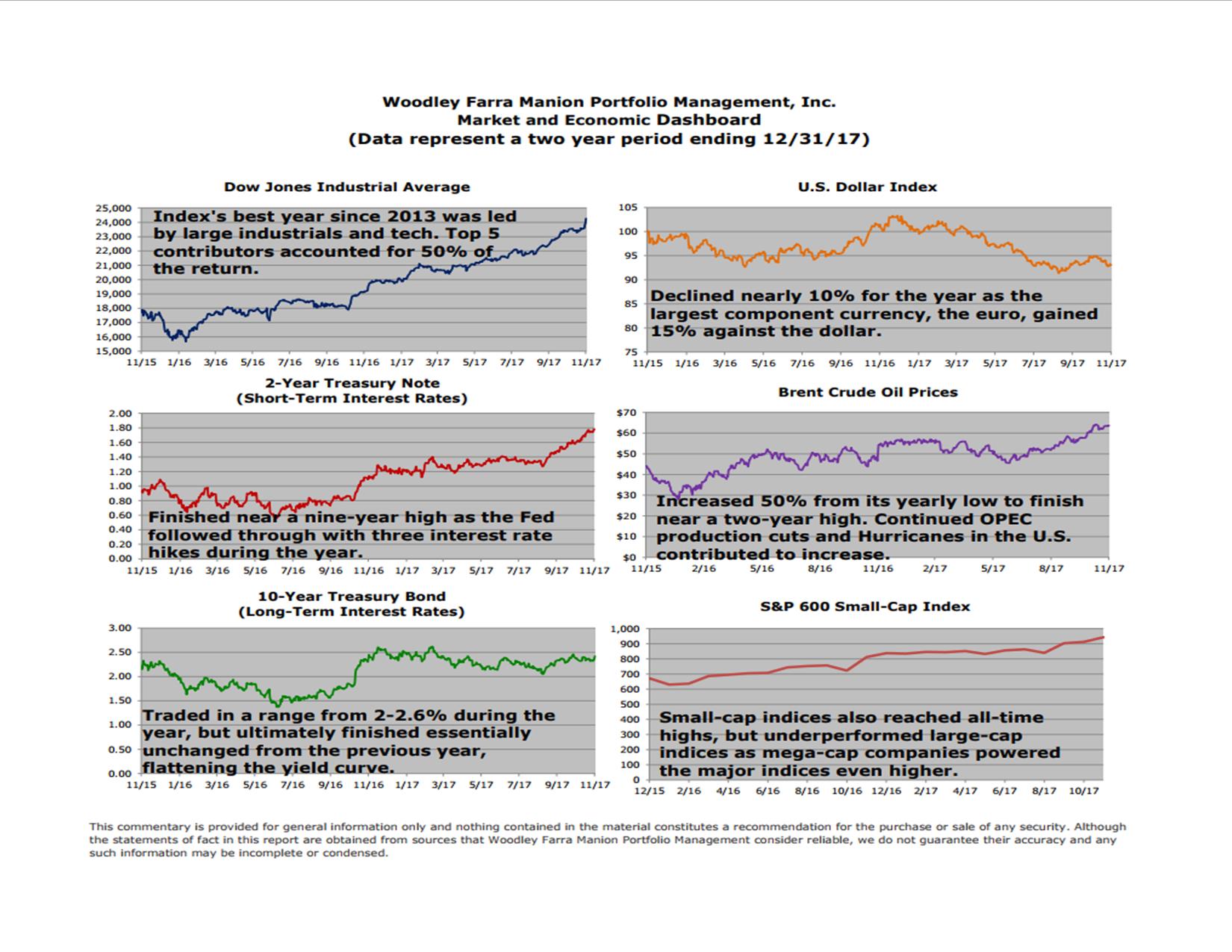
Happy New Year! 2017 turned out to be one of the best years for stocks since the bull market began in March of 2009. Market advances were broad-based, as small, mid-size and large company indexes all reached new all-time highs, as did many international markets. Even long-time laggard Japan reached new multi-year highs in the Nikkei index.
But all this is in the past and what does this mean for 2018? Stocks are starting the New Year with a solid base of support from good economic growth and strong gains in corporate profits, suggesting the risk of recession in the coming year is low. While investor demand for stocks remains strong, many investors continue to view the bull market with a cautious eye as the memories of the 2007-2009 bear market remain fresh. This skepticism has traditionally served as a contra-indicator of the market’s direction. The last 3% correction in US stocks was before the November 2016 election (a record time-span), and a perfectly normal pullback of 5%-10% is inevitable. 2018 is likely to see a return to more normal levels of volatility.
Central bank policy in the US, Euro Zone and Japan will be changing slowly as monetary policy shifts from the ultra-accommodative stance following the 2008 Financial Crisis. Strong employment growth and reduced slack in most major economies means inflation is becoming a greater risk. The US tax cut will add more stimuli to the economy later this year, which should give the Federal Reserve room to continue to gradually return interest rates to more normal levels.
Political tensions remain elevated in several regions around the world, though this seems to be a constant factor every year. Investors shrugged off these risks in 2017 but as volatility returns to more normal levels, hot spots like the Korean Peninsula and the Middle East may come back into sharper focus.
One final note, earnings per share for the S&P 500 is forecasted to grow 10% in 2018, which results in a forward price/earnings ratio of 18.6. This ratio is higher than the long-term average of 15, which means that any of the aforementioned risks (Fed policy, geopolitical) could adversely impact the market due to an unexpected turn of events.
George Farra, CFA
